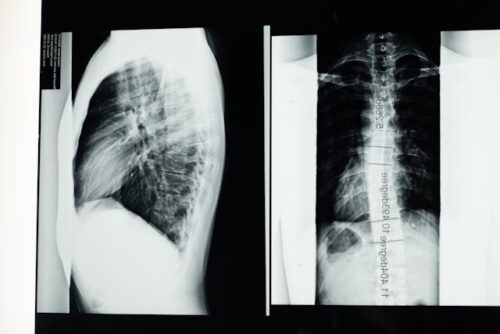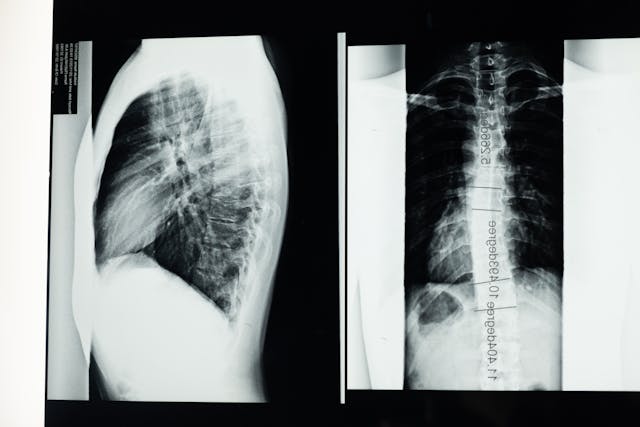
Rear-end collisions, common on Connecticut roads, often lead to significant spinal injuries. But how exactly does such an impact affect your spine? Please continue reading and reach out to a seasoned Stamford, Connecticut auto accident lawyer from Casper & de Toledo to learn more about how a rear-end collision can impact your spine and how our firm can assist you. Here are some of the questions you may have:


What Happens to Your Spine During a Rear-End Collision?
Initially, the biomechanical forces of a rear-end collision propel your body forward. Your seatbelt restrains your torso, yet your head may snap backward, then forward. This violent motion, known as acceleration/deceleration or whiplash, can injure vertebrae and soft tissues. The precise distribution of forces can vary quite a bit depending upon whether the impact is fully aligned or is off-center. The latter circumstance will tend to add rotational forces to the event. Moreover, the position of your body – facing straight ahead or possibly turned to either side – will change the biomechanical dynamic of a crash and an injury causing impact.
There is no simple way to elucidate the subject of spinal injury, given the multiple variables that may apply in any single crash. And injury to the spinal cord adds a completely different dimension to the discussion of spinal injury. For this topic, we limit the discussion to the thirty-three vertebrae in the human spinal column and associated intervertebral discs. The vertebrae at the bottom of the spine in the sacrum and the coccyx are fused. At the top of the seven vertebrae that comprise the cervical spine are the vertebrae known as the atlas and the axis. Those vertebrae and their supporting structures play a pivotal role in both the stability and rotations of the head and neck. Injuries to these vertebrae and/or supportive structures can cause major disability. Spinal discs, situated between the vertebrae, absorb shock but can herniate or rupture under collision forces. Ligaments stretch or tear, leading to instability. There are thirty-one pairs of spinal nerves, plus a distribution of peripheral nerves. Nerves may become compressed or damaged, causing pain, numbness, or weakness. Injury affecting one or more spinal nerves can cause pain, muscle spasm, and weakness.
Each case varies, influenced by factors like change in the velocity of the vehicles, vehicle size, as well as resilience to biomechanical forces, and seated body position.
How Can These Injuries Affect Your Life?
The aftermath of a spinal injury encompasses more than immediate pain; some victims face chronic issues, such as persistent neck and/or back and extremity pain and/or weakness and reduced mobility. Additionally, activities once taken for granted may become challenging or impossible. Financial strains also emerge from medical bills, rehabilitation costs, and lost wages and diminished earning capacity. Finally, emotional distress often accompanies the physical suffering, affecting victims’ overall quality of life.
The outcome can likewise be multi-factorial. Injuries to older people can also prove to be more challenging than to younger people. Age causes age-related changes in the form of normal age- related reduction of disc space separating the adjacent vertebrae and can reduce the space available for spinal nerves coursing from the spinal cord to the extremities.
Injuries to the spine that do not compromise the spinal cord can still cause devastating injuries. While some neck and/or back injuries may resolve with rest and/or periods of physical therapy and/or medication, other spinal injuries cause spinal instability, fractures, and nerve compression and require intervention ranging from physical therapy, trigger point injections, epidural steroids injections, nerve ablation, and an array of surgical interventions
Connecticut law acknowledges these multifaceted impacts, allowing injured parties to seek compensation for both economic and non-economic damages under statutes like the Connecticut General Statutes Section 52-572h, which governs personal injury damages.
What Legal Steps Should You Take after a Rear-End Collision?
Connecticut’s statute of limitations, outlined in Connecticut General Statutes Section 52-584, mandates that personal injury lawsuits be filed within two years of the accident. Initially, seek medical attention to document your injuries. While this two-year period affords those injured the luxury of time to actually commence a lawsuit if necessary, early legal advice can be very important.
Consult a Connecticut personal injury lawyer who has extensive experience handling cases involving spinal injuries from rear-end collisions. An experienced attorney can investigate the accident and negotiate with insurance companies in pursuit of a settlement or verdict that covers your medical expenses, lost earnings, and pain and suffering, ensuring your focus remains on recovery.
If you have further questions or require the assistance of a competent personal injury attorney, look no further than Casper & de Toledo. Contact our legal team today to schedule your free initial consultation. We are here to fight for you, every step of the way.

